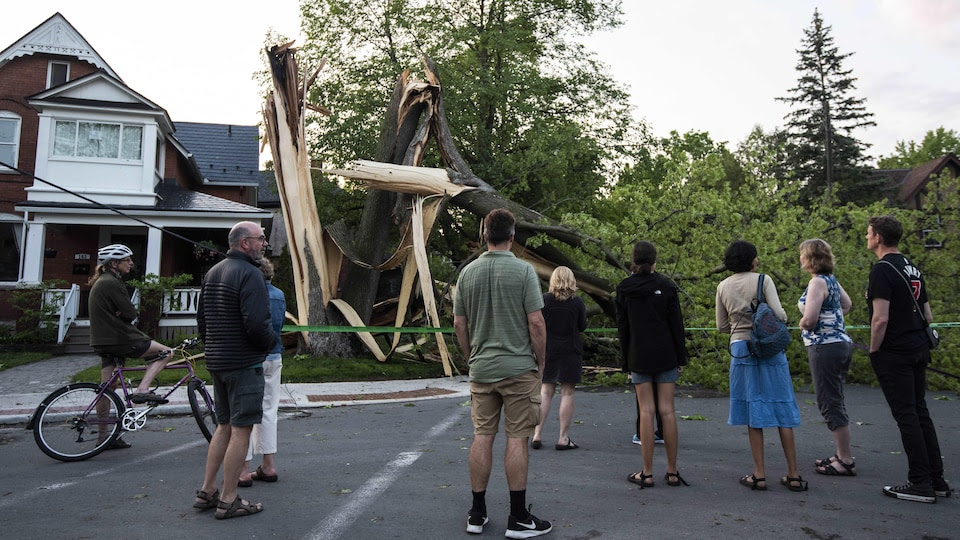It happens more and more that thunderstorms kill and this was the case in Eastern Canada, depriving of power up to 900,000 homes, especially in the Ottawa area, have made at least eight deaths, according to an official report revised upwards Sunday, May 22.
Emergency services and the Ontario provincial police announced to CTVNews the death of seven people, killed Saturday by falling trees and branches, compared to three counted the day before by the rescue services.
Sadly, the eighth death was on the Ottawa River on Saturday, May 21, when a canoeist drowned off Gatineau, a Quebec suburb of Ottawa.
The wind blew at an unusual speed with gusts over 140 km / h, swept Saturday, May 21 in Eastern Canada, from the Central United States, summarized Sunday, May 22 the national meteorology, noting that it was a rare phenomenon called “derecho”.
“This storm was nearly 1,000 km long, from Michigan to Maine”, American states located respectively in the Center and Northeast of the country, stretching across the Canadian provinces “of Ontario and Quebec”, summarized on a local radio David Philipps, meteorologist of the federal Department of the Environment.
“This is what we call a derecho: a long line of thunderstorms and microbursts,” explained this renowned scientist, noting that +derecho+ “is not a word we use frequently, it is an infrequent phenomenon.
The hardest-hit city was the federal capital Ottawa and thousands of homes were still in the dark Sunday night, May 22, while the streets were still cluttered with branches and various objects carried by the winds that in places took the form of tornadoes.
“The last 24 hours have been very, very difficult,” agreed Ottawa Mayor Jim Watson at a news conference Sunday afternoon, May 22, asking his fellow citizens “to remain optimistic despite the challenges” posed by the ravages of this summer storm.
Local authorities said it would take several days to clear all blocked streets and roads and return to normal.
Some 300,000 homes, mostly in the Ottawa and Laurentian regions (north of Montreal), were still without power Sunday night, May 22, according to online readings from local power providers Hydro One and Hydro Quebec.



Comment here